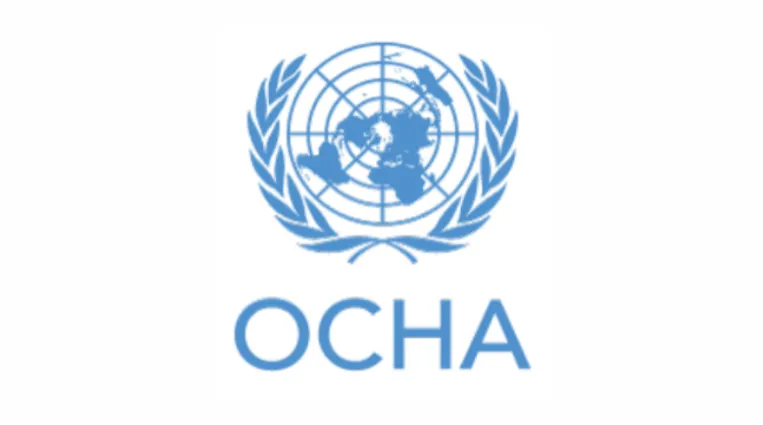Myanmar Humanitarian Update No. 24 | 3 December 2022

This regular update, covering humanitarian developments up to 30 November, is produced by OCHA Myanmar in collaboration with the Inter-Cluster Coordination Group and UN agencies. Response figures are based on self-reporting by organizations to clusters. The next humanitarian update will be issued at the end of December 2022.
HIGHLIGHTS & KEY MESSAGES
- More than 1.4 million people are displaced across the country, of whom more than 1.1 million were displaced since the 2021 military takeover.
- Armed clashes, compounded by tight security, access restrictions, and threats against aid workers, continue to hamper humanitarian operations across Myanmar.
- Humanitarians are hoping that an informal ceasefire agreement between the Arakan Army (AA) and the Myanmar Armed Forces (MAF) may create space for the delivery of much-needed assistance in Rakhine and southern Chin where access has been restricted since September. The situation is being closely monitored.
- Humanitarians are deeply concerned about the newly passed NGO registration law and partners are currently investigating the potential impact on the delivery of life-saving humanitarian assistance.
- Premature return of Internally Displaced Persons (IDPs) from past and present conflicts in Rakhine, Chin and southern Shan states remains a major protection concern amid ongoing insecurity and continued fighting. It is critical that returns are done safely and voluntarily, in line with international principles.
- Inflation in commodity prices, including for food and fuel, is deepening the socio-economic stress on communities, forcing them to adopt negative coping mechanisms.
- The 2022 Humanitarian Response Plan (HRP) remains drastically underfunded as the end of 2022 is approaching. As of 30 November, it is only 28 per cent funded, leaving a gap of US$597 million (FTS). In the first nine months of 2022, humanitarians reached at least 3.9 million people with assistance according to reports received by clusters.
KEY FIGURES
1.4M
People internally displaced across Myanmar
1.1M
People currently displaced by clashes and insecurity since February 2021
330K
People internally displaced due to conflict prior to February 2021, mainly in Rakhine, Kachin, Chin, and Shan
31K
Civilian properties estimated to have been burnt or destroyed since February 2021.
*Displacement figures fluctuate during any given month. These figures represent the number of people currently displaced. Cumulative numbers for returns and displacement are not always available.
SITUATION OVERVIEW
The humanitarian situation continues to be dominated by hostilities and increasing economic stress for millions of people. Frequent, indiscriminate attacks, including airstrikes and artillery fire in civilian areas have caused casualties and spread fear. Displacement also continues to rise despite some reported returns. According to the latest UN figures, the estimated number of new IDPs since the military takeover has passed 1.1 million, bringing the total number of IDPs across the country to almost 1.4 million. More than 49,400 people remain in neighbouring countries after fleeing since the takeover.
Nearly 31,000 civilian properties, including houses, churches, monasteries, and schools are estimated to have been destroyed although figures are difficult to verify. The level of destruction of civilian property, particularly of homes, combined with the deteriorating security situation and explosive ordnance risks are delaying returns and prolonging people’s displacement.
Suffering is being compounded by heavy restrictions on humanitarian access, including cumbersome bureaucratic processes and systematic blocks on access approvals, that continue to delay the delivery of critical and lifesaving assistance to affected people. Humanitarian actors, including the UN, INGOs, and local partners, continue responding to both pre-existing and emerging needs wherever they can. Despite the constrained operating environment and limited funding (less than 30 per cent), nearly 3.9 million people across Myanmar had received assistance by the end of September. Please see the full Quarter 3 dashboard here.
Local partners are now the backbone of the response and Quarter 3 saw a further increase in the number of organizations coordinating their response through the cluster system from 177 in Quarter 2 to 219 – a direct result of a scale-up in cluster coordination efforts, with a particular focus on hard-to-reach areas. Nevertheless, response numbers are based on voluntary reporting by partners to clusters and there is likely to be significant underreporting by local organizations. As 2022 is nearing an end, this year’s HRP is only 28 per cent funded, which amounts to only $230 million out of a total of $826 million required.
Announcements
21 May 2025
Open letter: Malaysia must lead ASEAN with principle, not hypocrisy, to address the Myanmar crisis

Progressive Voice is a participatory rights-based policy research and advocacy organization rooted in civil society, that maintains strong networks and relationships with grassroots organizations and community-based organizations throughout Myanmar. It acts as a bridge to the international community and international policymakers by amplifying voices from the ground, and advocating for a rights-based policy narrative.